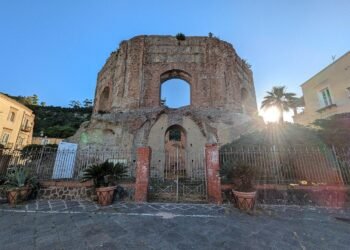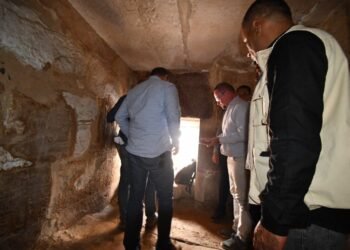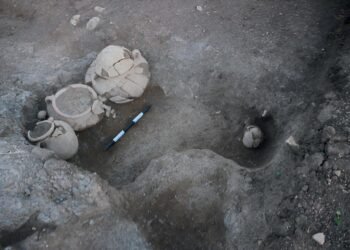A 5,500-year-old menhir has been discovered in the town of São Brás de Alportel, situated in the Algarve region of Portugal. Archaeologist António Faustino de Carvalho, from the University of the Algarve, announced the find.

A menhir is a single upright prehistoric stone monument, often shaped like a phallus, with a religious function and a symbol of fertility during the Neolithic period.
This is the first-ever archaeological excavation in São Brás de Alportel’s history, and it was initiated following the discovery of the possible menhir by a resident who was searching for fossils. The Regional Directorate of Culture of the Algarve, along with the Municipality of São Brás de Alportel and the University of the Algarve, collaborated on this project.
António Faustino Carvalho immediately recognized the significance of the find. He described the menhir as having similar characteristics to other Neolithic menhirs found in the Algarve, specifically in Aljezur, Lagoa, Lagos, and Vila do Bispo.
This discovery, however, holds particular importance because it’s made of limestone, distinct from other menhirs in the region, which are typically composed of different materials and belong to a later period, the Chalcolithic period or Copper Age.
The menhir of Monte do Trigo, originally erected vertically, is estimated to be around 5,500 years old, dating back to approximately 3500 BCE. It was initially situated to demarcate the territory of the people living in the area during that time.
Following a week of excavation, researchers identified that the menhir was not an isolated piece. There appear to be three or four additional fragments nearby, though in poor condition, with some reduced to 40-centimeter fragments. This menhir’s fortunate partial burial likely contributed to its preservation over the millennia.
The next steps involve preparing a report and conducting a topographical study to determine the best course of action for conserving the monument. There are discussions regarding whether it should remain in its current location or be carefully moved to a protected area.
The Centro Explicativo da Calcinha has been suggested as an ideal location for display, given its status as a tourist attraction in São Brás de Alportel.
Mayor Vitor Guerreiro expressed his enthusiasm for the discovery and his municipality’s commitment to preserving its heritage. This find serves as a testament to the presence of Neolithic communities in the Sotavento region, which has not been extensively studied in the western Algarve.
Menhirs, like the one discovered at Monte do Trigo, were significant during the Neolithic period, symbolizing fertility and often serving as markers for territory, transit points, or cattle crossings. These stone monuments were also places for gatherings, festivities, and religious ceremonies.






















